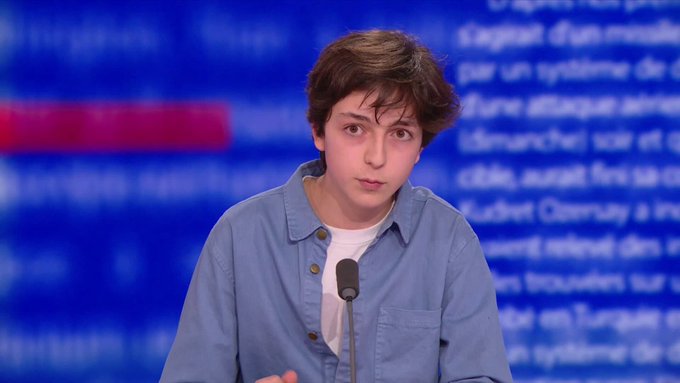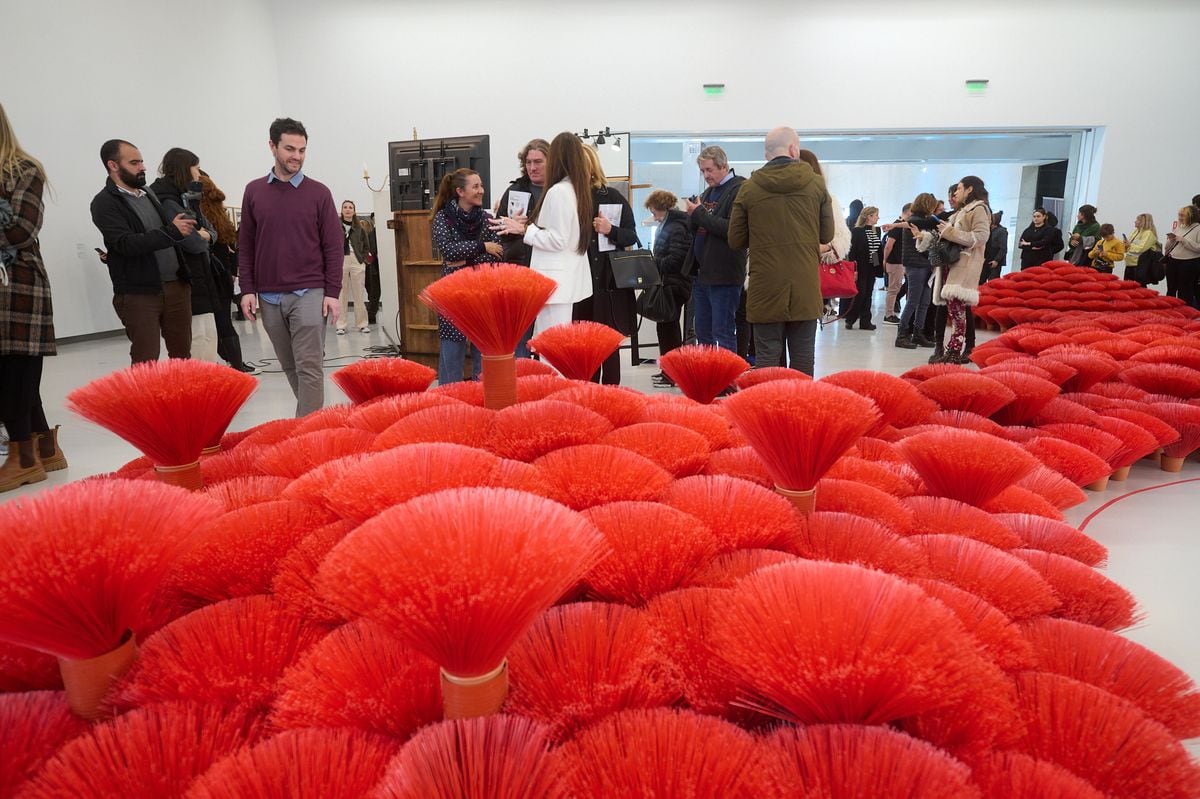It is located zero kilometers from the International Biennale of Contemporary Art of the South (Bienalsur) in Argentina, in an old hotel in Rio de la Plata that is now a museum. From there, it spreads through several countries – Bolivia, Peru, Algeria, Croatia … – and reaches Japan. The meeting, which was created in 2015, has sought from the start to be different: it is decentralized, it is created and run from a university and it intends to change technical circles. In July, the fourth edition, which is held until December, kicks off with the participation of more than 400 artists from 28 countries.
This year the Biennale kicked off in Mar del Plata, about a five-hour drive from Buenos Aires, in a museum overlooking the sea. There, Argentine artist Delia Cancela placed deck chairs [tumbonas] Made of canvas so that visitors can sit to see the ocean and the mighty Fagorian iron and metal sea lion that artist Marta Minogen built outside the museum in 2014. Above Cancella’s work, a cloud made of plastic bottles; He is year of airBy artist Esteban Alvarez. Then, architect Gaspar Lebedinski created a coral reef with crimson-colored plastic filaments.
The opening show is called rare It brings together the work of 21 artists from Argentina, Brazil, Colombia, Spain, France, Turkey and Uruguay who are invited to “unaccustom our gaze to everyday things”. The curators are of the opinion that once the exhibition is over, “90% of projects return to daily circulation” so that the carbon footprint is minimal, explains theorist and art historian Diana Wechsler (Buenos Aires, 62), art director at Bienalsur. The scarlet hairs with which Lebdinsky was built Coral reefsFor example, They will be brooms again.
Because if in previous years topics such as gender or immigration were dominant, this edition “features the issue of the environment in almost all issues,” Wechsler explains. Biennial themes are not specified a priori Rather, it is arising from the interests and interests of the artists. The works to be shown through December were selected from more than 5,000 projects submitted to “international, open, free and without pre-selected topics” calls made available by the organization.
18,370 km to Tokyo
rare It’s just the first stop – kilometer 383 of kilometer zero – to spread out. After the inauguration, an agenda was enacted that defines a mega-mapping and connects hundreds of artists with diverse paths and origins.
The fair starts on Saturday. General Life At the Art Center of the University of La Plata – Kilometer 52 from Kilometer Zero -. This is followed by exhibitions at institutions such as the Bogota Center for Modern Art – Km 4659 – in Colombia. Museum of the African Renaissance, Senegal – km 6,978–; The General Archive of the Andes, in Seville – km 9659 -, which will house for the first time an exhibition of contemporary art, or the Center Pompidou Málaga – km 9697 – in Spain. There will also be activities in spaces far from the traditional circuit, such as the 21-24 district in Buenos Aires – kilometer 7.6 – or in the San Juan de Miraflores district of Lima – kilometer 4,411 – in Peru.
“As our cartography grows, the global experience and its problematics are highlighted. We know that the globalization paradigm is in decline or at least in crisis, and this project shows that tension,” says Wechsler, adding, “We are interested in having a German or Korean artist come to work with artists From these scenes and vice versa.We believe that all this serves to put yourself in the shoes of the other.But it also works on the ability to produce works ActiveTo work with local materials and conditions.
“It’s not a biennale of artists from the south, it’s of artists from all over the world,” explains Annibal Guasami (Buenos Aires, 76), president of the University of Tres de Febrero – the public institution where the biennial was born – and director of Bienalsur.[El pintor uruguayo Joaquín] Torres García thought it necessary to go around the world and make maps with south to north and north to south; We don’t think cartography needs to change, what we think a new art cartography needs to be invented,” continues Guzami, who is also an entrepreneur and art collector.
The moderator paraphrased himself as follows: “We believe that we must ensure that artists from the South interact with artists from the North, and artists from the North with those from the South. that the artist, due to the fact that he was born in a southern country, has no less chance than an artist who was born in the United States or in Europe.” Until December, in fact, artists such as Argentinean Julio Le Park will participate in the Biennale; Brazilian Regina Silvera, Colombian Olga Hoeike or the Moroccan Amine El Kotibi, but also the Frenchman Pierre Ardovin, the Swiss Ursula Beeman or the American William Sorceth.
What Jozami and Wechsler considered eight years ago, says the collector, was something “completely original.” “We didn’t want to make a biennale like the ones we all know, which belong to the people of a certain city, where collectors and gallery owners come. We wanted to make an international cultural project that has nothing to do with the art trade, that reaches places where this kind of event doesn’t reach. Usually,” says Guzami.
Since then, the initiative has been boosted with new venues and exhibition artists and curators. The team that organizes it is made up of about twenty people and is funded by corporations, governments, foundations, and agreements with universities and museums around the world. They say they do it out of desire and because “it’s right.” “I always say that art or artists cannot change society, but art and artists can make people think, and these people can influence how society changes,” Guzami notes.

“Travel junkie. Coffee lover. Incurable social media evangelist. Zombie maven.”







More Stories
Emotional message from Alba Diaz to her grandfather Manuel Benitez “El Cordobes” on the occasion of his 88th year
Isabella Santiago was fired from ‘La Casa de los Famosos’ because of her bad behavior: ‘Leave my house now’
Emilia Drago and Jorge Aravena, actors from the movie “Pituca sin Lucas”, will be present in “El Gran Chef Famosos”.